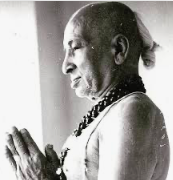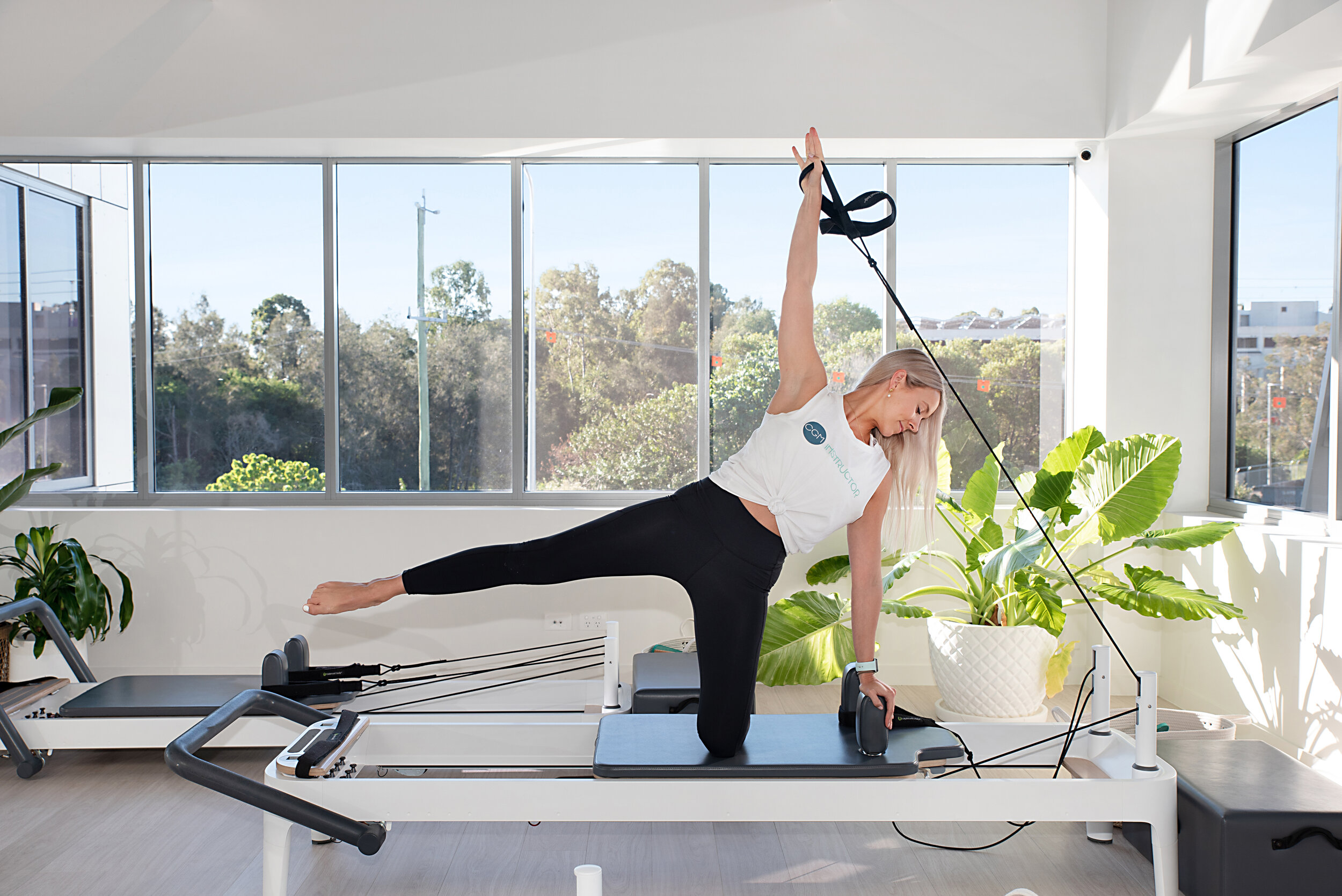
CGM Pilates, Yoga, and Wellness
What is the difference between Pilates and Yoga?
Pilates and Yoga are often paired together under the one umbrella, and that’s not without good reason. They share many similarities but they also have their key points of difference.
What is important to note is that both Pilates and Yoga are mind-body conditioning methods with a holistic approach to achieving health and wellness.
Yoga
While there are many physical benefits to practicing yoga, and it is excellent for your overall health and wellbeing, yoga is merely a tool to help you influence and access your mind. Yoga harmonises or joins the mind, body, and spirit with the goal being to lead a person to a state of peace and stillness.
The physical component of yoga including the poses and movements you practice in a yoga class is called asana. Asana is one of the eight limbs of yoga. The physical benefits of asana can include improved strength, flexibility and mobility, just to name a few. The main reason we practice asana is to calm the mind so that we can sit still in meditation.
Sri T Krishnamacharya, the father of modern yoga
The meaning of yoga as given in Sutra 1.2 of the Yoga Sutras of Patanjali is to calm the fluctuations of the mind.
Chitta vritti nirodhah
~ Patanjali
Pilates
Pilates is often thought to be similar to yoga, which is not surprising since Joseph Pilates the founder of Pilates practiced yoga. It was during World War I that Jospeh Pilates created, practiced, and taught his physical fitness program, previously termed ‘contrology’, to aid in the rehabilitation of the disabled and sick. His guiding principle is that the ‘whole’ body must be exercised to achieve good health.
Joseph Pilates developed a series of exercise that can be performed either on the floor (mat Pilates) or on the various pieces of apparatus he invented. The Pilates equipment is designed to condition the entire body, and through core strengthening exercises improve strength, flexibility and ultimately correct posture, body alignment and balance.
Joseph Pilates on the Pilates Reformer
Similarly to yoga, Joseph Pilates regarded his method as a holistic approach and a path to total health, rather than just a physical fitness program.
Pilates is the complete coordination of mind, body, spirit
~ Joseph Pilates
So while you can improve your strength, flexibility and mobility from both methods, the main goals of the two practices differ. The full practice of yoga aims to calm the mind, and the Pilates method aims to improve physical strength. Both Pilates and yoga aim to improve the mind-body connection.
At our beautiful Sunshine Coast studios, CGM Pilates & Yoga, we offer both Pilates and yoga, and enjoy the benefits of practicing both methods. For enquiries visit us online here or pop into our Maroochydore studios and try a class.
Why I love Magnesium
It's no secret I love nothing more than staying home on a Saturday night and having a long relaxing bath (I know, exciting right?!) So, if I could replicate the effects of a bath and put it into a bottle for those times when a bath is not an option it would be in the form of MgLIFE Magnesium Oil Spray.
I love this product so much I thought I'd share it with you in the studio so that you can enjoy the benefits too. The reason I love MgLIFE is because it is the most pure, concentrated magnesium oil on the market and made from 100% Australian organically certified ingredients (trust me, I've tried them all!).
Don't just take my word for it though, have a read below as to why Magnesium is so good for our active Pilates bodies.
MAGNESIUM BENEFITS
Magnesium — a mineral our body needs to be healthy
Magnesium is essential for over 300 of our body’s metabolic reactions! Every cell of our body needs it, it’s vital for our brain-health, heart-health, muscle contraction, bone strength and energy production. Symptoms of magnesium deficiency range from fatigue to insomnia, to muscle aches and pains and it can also affect our moods and anxiety levels.
Three quarters of all Australians are magnesium deficient
Studies have shown that the average diet is not providing enough magnesium for the body to function at its best. So, what about magnesium tablets? Many people have problems absorbing oral supplements, with up to 90% not being absorbed at all.
The solution is applying magnesium oil on the skin
In 30 minutes, your skin will absorb the magnesium in the oil. It’s such an easy way to get the magnesium that is so vital for our general well-being. People who are lacking in magnesium report many benefits once they introduce the Magnesium Oil into their daily routine. Here are just a few…
Muscle relaxant for soreness prevention and workout recovery
Because the oil can be used as a natural muscle relaxant, applying it before and after exercise can help relieve the aches and pains that occur during and after exercise. Helps prevent DOMS (Delayed Onset Muscle Soreness) and cramping.
Restless legs and muscle pain
Alleviate restless legs and muscle pain by applying directly to the problem areas.
Skincare
A number of studies have found magnesium is very good at breaking down the different fats and oils that form in our skin every day. An ideal treatment for skin irritations such as acne, blackheads and other stress-related skin conditions.
Sleep improvement
Magnesium helps our bodies by relaxing certain receptors in our brain and nervous system. It also aids neurological and physiological processes when the body is under pressure. Applying Magnesium Oil to the soles of your feet and/or your calves just before bed allows your body to absorb this vital mineral so you can relax and get a great night’s sleep.
Headaches and migraines
Applying to the base of your neck and/or hairline can alleviate headaches. Magnesium helps with headaches as it helps lower the brain’s temperature and also regulates key hormones that help us to relax.
Recommendation
Using MgLIFE Magnesium Oil helps you maintain a healthy magnesium intake for your everyday well-being. You can make it part of your daily routine in the morning, apply directly to a certain part of your body before or after exercise, rub it on your feet just before you go to bed or add it to your next warm bath.
4 pumps provide on average 117mg of elemental magnesium / 460mg of magnesium chloride (approximately 1ml)
ADELAIDE, SA © COPYRIGHT 2018 MgLIFE
MgLIFE is now available for purchase at CGM Pilates.
How often should I do Pilates?
So you love Pilates, it makes you feel amazing …but can you do too much?
How often should I do Pilates?
So you love Pilates, it makes you feel amazing…but can you do too much? Most of us know that getting enough rest after exercise is essential for muscle recovery but many of us still overtrain or feel guilty to take a day off! Our body repairs and strengthens itself in the time between workouts, and continuous training can actually weaken the strongest of us!
What happens during recovery?
Recovery time is the period that the body uses to adapt to the stress of exercise and this is when the real training takes place. Exercise causes changes in the body such as muscle tissue breakdown so rest and recovery allows our body to replenish energy stores and repair
damaged tissues. Without sufficient time to repair, muscle tissue breakdown can continue, leading to new injury, reoccurrence of old injuries and reduced performance/ ability during future sessions.
How to recover?
Recovery doesn’t always mean being inactive, you can include active recoveries into your exercise regime. It is also important that you include a variety of training into your schedule. On a rest day, incorporating walks, hikes, swimming and stretching can help you recover so that your body can work efficiently during your next class.
Bottom line.. How much is too much?
When we undergo the stress of physical exercise, our body adapts and becomes more efficient. However, there are limits to how much stress the body will tolerate before it risks injury. Doing too much too quickly can cause damage and doing too little can result in little to no improvement. This is why it is important to find a maintain a balance between exercise and recovery. Each individual has their own personal goals and this should dictate how often you participate in a Pilates class. If your goal is to increase mobility, you can notice changes by attending one class a week, if you are looking for improvements in strength, mobility, balance, coordination then twice a week can elicit change. Finally, if your goal is to achieve a full body transformation including changes in muscle tone, strength, posture and mobility then we recommend 3-4 times per week. It is important that you find balance in your active lifestyle, remain in tune with your body and look after yourself. After all, our body is the only place we have to live! If you are a Pilateholic like us and attending a Pilates class every day or on consecutive days, it is recommended that you have at least 12 hours rest in between classes, with 24 hours ideally.. Remember it's all about quality, not quantity!
Written by Marissa Cumming, CGM Pilates Instructor and Accredited Exercise Physiologist




